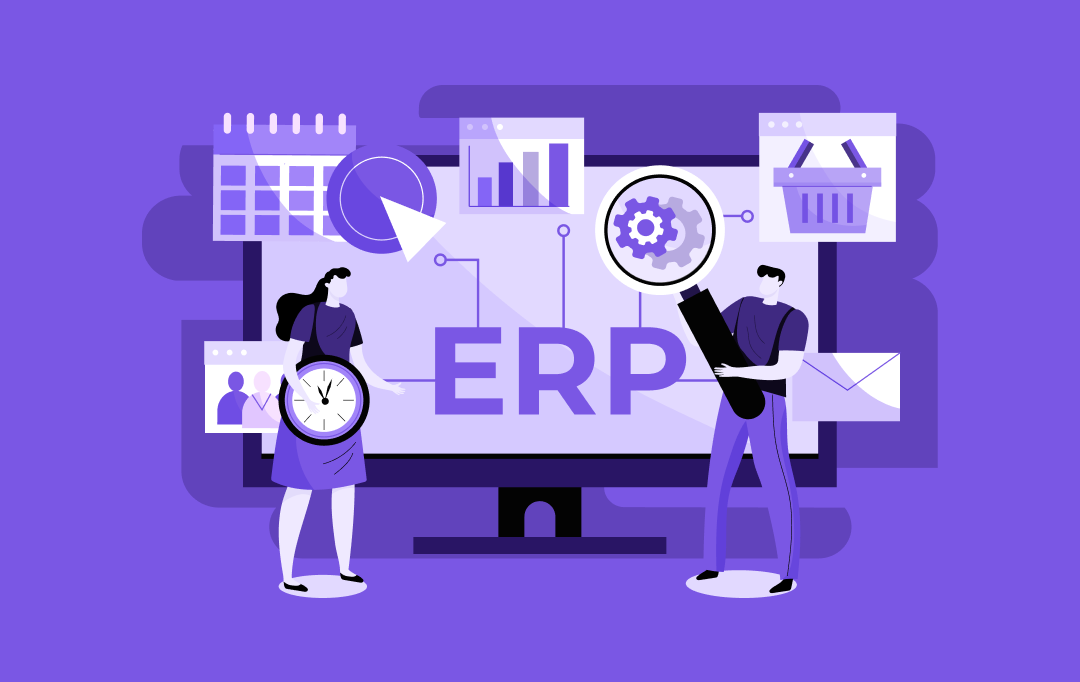- Why is Salesforce CRM Integration Important?
- Benefits of Salesforce Integration Solution
- Improve Data Accuracy and Consistency
- Streamline and Automate Processes
- Comprehensive Customers View
- Improve Decision-Making Process
- Boost Productivity
- Top 10 Features of Salesforce Integration Solutions
- Contact Management
- Opportunity Management
- Salesforce Engage
- Performance Management
- Lead Management
- File Synchronization and Share
- Email Integration
- Partner Management
- Custom Dashboard and Reports
- Salesforce App Integration
- Salesforce Integration Tools
- Salesforce Integration Options and Approaches
- Code-Based Integration Approach
- App-Based Integration Approach
- Best Practices for Salesforce Integration
- Define Your Business Objectives
- Know Salesforce Integration Cost
- Understand Your Data Requirements
- Use Salesforce Integration Tools
- Opt for Salesforce Integration Services
- Salesforce Integration Patterns and Options
- Remote Process Invocation—Request and Reply
- Remote Process Invocation—Fire and Forget
- Batch Data Synchronization
- Remote Call-In
- Data Virtualization
- UI Update Based on Data Changes
- Data Migration
- Embark on your Salesforce Integration Journey with Appinventiv
- FAQs
The world of customer relationship management (CRM) solutions is evolving by leaps and bounds, as more than 90% of businesses with 10+ employees use some CRM system to satisfy the ever-changing needs of their customers.

According to Grand View Research, the global CRM market size was valued at $58.82 billion in 2022 and is expected to grow at an impressive CAGR of 13.9% from 2023 to 2030. And Salesforce integration solutions alone capture around one-third of the global CRM users.

Salesforce integration refers to the process of connecting Salesforce with other existing systems in the IT infrastructure that enables seamless data exchange and workflow automation.
Salesforce has significantly improved the sales operation of businesses and revolutionized the corporate world. The rapid integration and hyper-personalization of AI, RPA, and social media customer service are considered to be the driving force behind the ever-increasing market growth of Salesforce across industries.
One of the remarkable reasons why businesses across industries are adopting the Salesforce solution is its competence to apply multiple integrations that help streamline various operational processes. For instance, businesses can integrate Salesforce with a wide range of systems, applications, and platforms, such as marketing automation tools, content management platforms, ERP systems, social media applications, customer support platforms, and more.
This integration is highly indispensable for businesses that are looking for an efficient way to streamline their operations, improve productivity, enhance data accuracy, and gain a holistic view of their customers’ activities across different platforms. By integrating the system with Salesforce, organizations can efficiently manage all the information of the different processes that run across various applications.
Consider scenarios in your technology infrastructure where valuable information is stored in one system but is also needed in another. In such instances, Salesforce API integration is considered valuable, handling and synchronizing vast troves of data across systems, databases, and applications. In short, Salesforce integration solutions or any such custom CRM empowers businesses to unleash the full potential of their data and other systems, opening up endless possibilities and driving immense growth.
Why is Salesforce CRM Integration Important?
In today’s digital landscape, businesses need to constantly improve their products and operational efficiency to satisfy customers’ needs and stay competitive. It can’t be achieved with a system that works in isolation; on the contrary, it calls for various types of integration to work more efficiently and in a scalable manner. Integration of Salesforce with other systems helps organizations enable seamless data exchange and workflow automation.

Salesforce CRM integration helps boost productivity, enhance data accuracy, facilitate smooth information flow, and give a comprehensive view of customers. Eventually, system integration with Salesforce empowers businesses to harness the full potential of their data, streamline processes, and make more informed decisions.
Let’s delve deeper to explore salesforce features and benefits in detail while also discovering how you can leverage the potential of this leading CRM software with the help of a reliable integration partner.
Benefits of Salesforce Integration Solution
Salesforce or any such custom CRM provides limitless benefits that organizations can leverage to reach greater heights. The specific benefits derived from Salesforce integration solutions typically depend on the industry and the types of integration implemented.
Nevertheless, there are some common benefits that result in better business performance, irrespective of your industry and integration type.

Improve Data Accuracy and Consistency
Salesforce accesses data from different sources like HR, sales, accounting, ERP, and even with in-house systems, allowing your team for real-time data synchronization and reducing/removing the need for manual data entry. This integration with Salesforce ensures data consistency across systems, enhancing data accuracy and reducing errors.
Streamline and Automate Processes
It is one of the most obvious and remarkable benefits of any CRM integration solution, including Salesforce. Irrespective of the business domain, Salesforce integration allows for seamless data exchange across different departments and automates synchronization, improving cross-department processes.
For instance, enterprises tend to work with multiple software systems for enterprise resource planning (ERP), data management, accounting, communication, and other purposes. CRM solutions bring all these systems together and integrate them into one IT infrastructure, leading to improved ROI, customer satisfaction, and business efficiency.

Comprehensive Customers View
System integration with Salesforce consolidates the sensitive information of customers from different systems into a centralized source. This unified view gives a comprehensive view of customers’ data, enabling one-on-one interaction, reinforcing targeted marketing campaigns, providing personalized recommendations, and giving better customer service.
Improve Decision-Making Process
Since Salesforce CRM integration gives a 360-degree view of customers’ data, you can make more informed decisions, enhancing your products/services and improving customers’ experience. You can’t make better decisions when data is locked in silos. Having easy access to real-time data across systems can help you analyze analytics dashboards and make informed decisions while aptly responding to changing trends based on real-time customer insights.
Boost Productivity
Typically, sales representatives handle large troves of data from both Salesforce integration solutions and third-party platforms. For example, some sales representatives count on ERP accounting software to monitor inventory, track sales data and manage customer details.
Both ERP systems like SAP and CRM solutions like Salesforce store substantial amounts of sensitive information that sales representatives necessitate. Manually gathering information from both sources can take a lot of time. Here, Salesforce SAP integration can be a great savior, significantly eliminating the need to compile data sets, which leads to enhancing team performance by up to 44%. This salesforce integration example represents just one instance of enhanced performance and improved productivity. There are many more cases like this.
Overall, system integration with Salesforce offers a wide range of benefits that automates data synchronization and enhances data accuracy, leading to improve team productivity, operational efficiency, and customer experience.
Top 10 Features of Salesforce Integration Solutions
While Salesforce is popularly known as a CRM system, its services are extended at various levels, from AI to IoT and beyond. Like any custom CRM solution, the unified salesforce integration services cover almost all aspects of a business, such as email integration, lead management, sales collaboration, etc. You should know the common features of Salesforce before moving ahead with your custom CRM development or Salesforce integration process.
Also Read: How AI can Improve Customer Experience Strategy?

Contact Management
This feature of Salesforce assures hassle-free contact management of customers by giving an easy access to their complete information. It gives a clear picture of their interaction sessions, activity history, key contacts, and so on.
Opportunity Management
It is one of the most prominent features of Salesforce, enabling organizations to view the activity timeline of customers. Also, it depicts the various stage of a particular sales deal, assisting in determining what should be the next move to win the deal.
Salesforce Engage
This feature helps improve customers’ engagement by giving a complete view of their activity history and sending them personalized messages at the right time when the response rate is high. It works like a bridge between the sales and marketing team as it allows to share the marketing content with sales to boost the company’s selling power.
Performance Management
This feature improves the execution of the company’s sales process by setting a metric-based goal for the teams. In addition, it keeps giving continuous feedback and rewards to improve performance and realize the goal.
Lead Management
This feature of Salesforce or any custom CRM solution acts as a fast lead conversion tool, giving access to the up-to-date contacts on the timeline and the original source of the leads. In addition, automatic emailing templates boost your revenue-generating tactics. Salesforce analyzes your leads and automatically assigns the best leads to the right executive. Accordingly, you can never miss a lead and grow more revenues.
File Synchronization and Share
This is one of the most prominent features of Salesforce. It synchronizes files across the systems and allows you to share them from any device at anytime. This feature is classified with multiple filters that make it easy to maintain access, control rights, and find a specific document from a pile. Also, read the benefits of Salesforce Sharepoint Integration in this detailed blog for a clear understanding of how the seamless combination of CRM and document management transforms business processes.
Email Integration
Email integration is one of the most used and valuable features for businesses, optimizing operations and enhancing their communication patterns. Salesforce integration with Gmail, Outlook, and other emailing platforms helps synchronize events, contacts, emails, and other vital things to work faster. Also, it provides a complete view of the connected customers, assisting in drafting and sending emails to contacts from any corner of the world.
Partner Management
Salesforce app integration allows you to create the ecosystem of your partners, which helps manage the hiring, onboarding, and training process. This features makes it a smooth ride for partners to sell the products or services and improve performance.
Custom Dashboard and Reports
Salesforce dashboard and report feature gives a real-time representation of the business at a glance, depicting how it is performing in the market. It will help you identify the market trends, calculate the activities and create custom sales forecasting reports without needing any IT assistance. You can easily build your custom dashboard by simply dragging and dropping icons in Salesforce and monitoring your team’s performance.
Salesforce App Integration
It allows users to access data, make conference calls, take meeting notes, view events, and do account updates from anywhere and at any time. Further, sharing files and documents get quick and easy with Salesforce app integration, giving you more flexibility to work from anywhere. Also, the offline data updates make it easy to close the deal faster.
These are the top 10 features of Salesforce integration solutions that ensure smooth automation of workflows, contributing to streamlined business processes and improved productivity. Whether you are considering integrating Salesforce into your existing operations or developing your own CRM solution, make sure that it incorporates the above-listed features or anything that aligns with the specific requirements of your business and industry.
You may like reading: A Comprehensive Guide to Custom CRM Software Development
Salesforce Integration Tools
Salesforce involves a variety of integration tools to connect with other systems, streamline processes, and enhance data management. These tools cater to different integration needs. To help you gain an in-depth understanding of Salesforce integration tools, here is a concise table summarizing the popular integration tools and their key benefits. This table will help you select the best tool for your integration needs.
| Tool | Description | Benefits |
|---|---|---|
| RAPIDI | A data integration tool that connects Salesforce with ERP systems. |
|
| Commercient | Integrates Salesforce with ERP systems, providing a 360-degree view of operations. |
|
| Boomi | Cloud-based integration platform with comprehensive tools for connecting Salesforce. |
|
| Jitterbit | Provides integration solutions with an easy-to-use interface and pre-built templates. |
|
| MuleSoft | A comprehensive platform that connects Salesforce to any system, on-premises or in the cloud. |
|
| DataOrbis | Data management platform that integrates with Salesforce for better data analytics. |
|
| TIBCO Scribe | An integration platform, focused on connecting Salesforce with a variety of data sources. |
|
| ActionDesk | Spreadsheet-based tool that integrates Salesforce data into familiar spreadsheet environments. |
|
| Copado | Salesforce-native DevOps solution for integrating and deploying Salesforce applications. |
|
| Gearset | Deployment and release management tool specifically for Salesforce. |
|
| Hutte | Visual development environment for Salesforce projects, focused on low-code solutions. |
|
| Toolkit for Salesforce | A suite of tools designed to enhance Salesforce development and integration. |
|
Salesforce Integration Options and Approaches
There are typically two types of integration in Salesforce, app-based and code-based. Both these salesforce integration options help address the particular needs of businesses in different ways. Depending on your business needs, you can identify the best practices of salesforce integration that have the optimal capability for you to use. Accordingly, the choice of system integration with Salesforce is significantly determined by the unique requirements of your organization.
Code-Based Integration Approach
Code-based integration is an efficient option to integrate Salesforce with other applications using a programming language. Often, Salesforce experts use Apex to write codes that are similar to Java and host them on the Salesforce platform.
This approach is suitable for more intricate integration, making it a great choice for large enterprises needing to optimize significant processes. You can’t execute a code-based integration approach independently. It will necessitate partnering with a CRM development company to assist you with the process.
App-Based Integration Approach
It is a low-code or no-code approach to the Salesforce integration process. This approach involves using applications from Salesforce App Builder like MuleSoft Composer or a third-party app like Zapier or Coupler.io.
Since the app-based integration approach does not support complex integrations, it offers ease of use to set up the system, enabling SMEs and solopreneurs to conduct the integration process independently. However, taking the assistance of a professional CRM developer or integration provider is always a wise move to ensure a failsafe integration with Salesforce.
Best Practices for Salesforce Integration
Integration with Salesforce can be challenging when you are unaware of the best practices for Salesforce integration. You must follow salesforce data integration best practices to ensure a successful and efficient integration. Here are the best practices for Salesforce integration that ensure a smooth transition:

Define Your Business Objectives
Salesforce integration can be confusing with the availability of so many applications and systems. Therefore, you first need to clearly understand your requirements and define your objectives accordingly. Figure out the specific system for integration and desired outcome as a well-defined plan is a driving force behind the success of Salesforce integration solutions.
Know Salesforce Integration Cost
Before you start your Salesforce integration process, you should know how much custom CRM development or Salesforce integration will cost you and whether your budget allows you to engage in that spending. If you can’t afford to spend the estimated cost of what you are going to get, you should reconsider the option.
Understand Your Data Requirements
You should have a deep understanding of the data you are integrating with Salesforce. Identify data fields, formats, who has access to it, and any mappings required for seamless data exchange between systems. Verify and clean up data as per the requirements of your business.
Use Salesforce Integration Tools
Leverage the best Salesforce integration tools and features based on the requirements of your business. The tools like connectors, APIs, and frameworks are specifically designed to ensure compatibility and streamline the integration process.
Opt for Salesforce Integration Services
To ensure seamless integration with Salesforce and achieve the desired outcome; you should consider partnering with a reputed Salesforce integration provider (like Appinventiv). Salesforce integration is a complex process; any inefficiency during the process can result in data problems, wasted time, costly errors, and unhappy customers. Hence, it is wise to get the process done by reputed Salesforce integration experts who will stand by you throughout the process, right from deployment, testing, and maintenance to continuous maintenance and consultation.
Related Article: How to successfully implement CRM? A step-by-step process
Salesforce Integration Patterns and Options
Now that we know the best practices and main approaches to Salesforce integration, let’s take a look at some of the key types of integration patterns when connecting the systems.
Remote Process Invocation—Request and Reply
Salesforce initiates a process on a remote system and waits until the process is completed. Once completed, Salesforce assesses the outcome by analyzing the response received from the remote system.
Remote Process Invocation—Fire and Forget
Salesforce sends a request to an external system but does not wait for a response. The external system processes the request independently.
Batch Data Synchronization
In this pattern, large volumes of data are exchanged between Salesforce and external systems on a scheduled basis, typically in batches.
Remote Call-In
External systems initiate calls to Salesforce to perform operations or query data. It enables Salesforce to create, retrieve, update, and delete the data.
Data Virtualization
It provides real-time access to external data sources without replicating the data in Salesforce, allowing seamless data interaction from another system.
UI Update Based on Data Changes
This pattern is used when the Salesforce UI needs to be updated as a result of data changes. For example, when a Case Manager wants to check the Case Update Status, you would create a custom UI and utilize the Streaming API with PushTopic to subscribe to and receive alerts.
Data Migration
It moves large amounts of data into Salesforce from legacy systems or other applications, typically as a one-time or occasional operation. This pattern is used to migrate customer data from an old CRM system to Salesforce during a new CRM implementation.
Embark on your Salesforce Integration Journey with Appinventiv
Appinvetiv, a reliable CRM developer and integration provider, helping you unlock the full potential of your IT infrastructure and revolutionize business operations. Our Salesforce integration solutions and custom CRM development services are testimony to the success we have delivered to our global clients across industries.
👉 Check out our portfolio to witness how we helped businesses redefine their operations and excel in their respective industries.
At Appinventiv, we offer the best-in-class software development services by using the industry’s best practices. Whether on-premise or through our Cloud consulting services for cloud-based integration, we ensure a swift and seamless integration with your existing infrastructure. Unsurprisingly, Salesforce integration solutions can bring limitless benefits to your businesses when done professionally, from streamlined processes to improved visibility and beyond.
Our team of experienced engineers from a leading software development company in New York will first analyze your existing system, find any underlying setbacks, and develop the best solution tailored to your specific business requirements.
So, are you yearning for successful system integration with Salesforce to redefine your business fortune? Partner with an IT consulting company like Appinventiv, and our CRM experts will do it for you by providing a range of services like:
- Integration with complex custom solutions
- Integration of multiple distributed systems
- Planning complex integration scenarios
- Data synchronization across the systems
- Salesforce integration consultations
- Consolidation of numerous CRM systems.
Get in touch with our Salesforce experts now and be ready to experience the most desired outcome for your business in the least time possible.
FAQs
Q. What is Salesforce integration?
A. Salesforce integration is the process of connecting Salesforce with other applications or databases within a company’s infrastructure. It allows smooth data exchange between Salesforce and other systems, enabling a comprehensive view of data, streamlining operations, improving productivity, and enhancing customers’ experience.
Q. How to integrate with Salesforce?
A. To ensure smooth and successful integration of Salesforce, you need to follow these steps:
- Identity your integration needs
- Choose the most suitable approach
- Choose the best Salesforce integration tools
- Design a detailed integration plan
- Opt for Salesforce integration services
- Implement, test and deploy
- Monitor and maintain as required.
Q. What is an example of salesforce integration solutions?
A. A remarkable example of it is the Salesforce email integration. Integration of Salesforce with email marketing platforms like Mailchimp allows for smooth data synchronization, including contact lists, leads, and campaign mapping. Also, it enables businesses to get a comprehensive view of the customers’ history, automate email marketing campaigns and monitor its effectiveness.
Q. What is the Salesforce integration cost?
A. The cost of Salesforce integration can vary widely depending on several factors. It includes the complexity of the integration, the number of systems involved, the level of customization required, the tech stack used, integration options and patterns, and the location of the IT team you hire for Salesforce integration. Also, there can be ongoing costs associated with data migration, training, and platform maintenance.
Thus, you should carefully evaluate these critical components and your integration needs to determine the overall cost of Salesforce integration for your organization.
However, to give you a rough estimate, we can say that integrating Salesforce with other existing systems costs between $25,000 and $250,000 or more. Discuss your requirements with us to get a detailed quotation for the Salesforce integration cost and timeline.



Custom Development or White Label Solutions: Which is Right for Your Business?
Key takeaways: 77% of companies are prioritizing digital transformation; the right tech approach is crucial for staying competitive. Custom development offers tailored solutions for unique needs, flexibility, and long-term scalability. Whereas, white-label solutions provide quick market entry, cost-efficiency, and easy customization for standard needs. Appinventiv’s expertise helps you navigate custom development vs white-label to choose…

ERP Integration in Australia - Why It Is Essential and How to Do It Right
Key takeaways: ERP integration enables operational efficiency, reduced costs, and enhanced decision-making. Healthcare, finance, manufacturing, retail, and all the other sectors are benefiting from ERP integrations in Australia. While ERP integration can be costly, ranging from AUD 45,000 - AUD 450,000, it leads to significant long-term savings and scalability. Compliance with Australian regulations is critical,…

Predictive Analytics Software Development - Features, Benefits, Use Cases, Process, and Cost
Key Takeaways Predictive analytics helps businesses shift from “what has happened” to "what will happen," enabling proactive strategies rather than reactive ones. Real-time analytics and AI integration are driving the growth of predictive analytics, making it more accurate, accessible, and critical for business success. Custom predictive analytics solutions can enhance customer satisfaction, reduce costs, and…

















